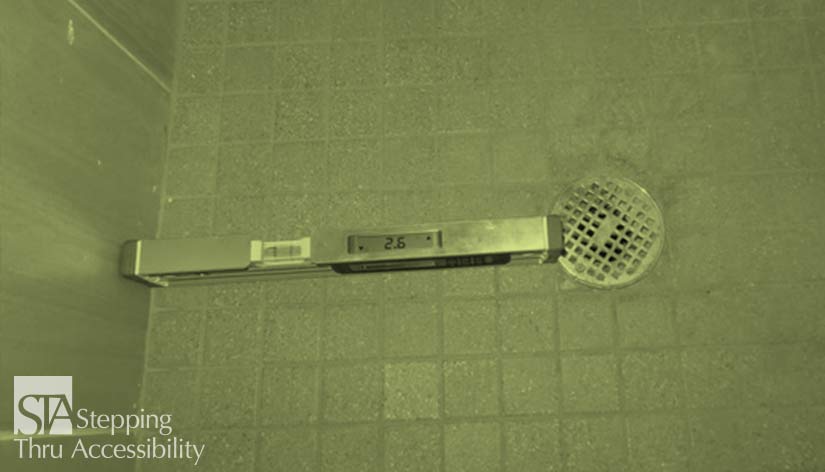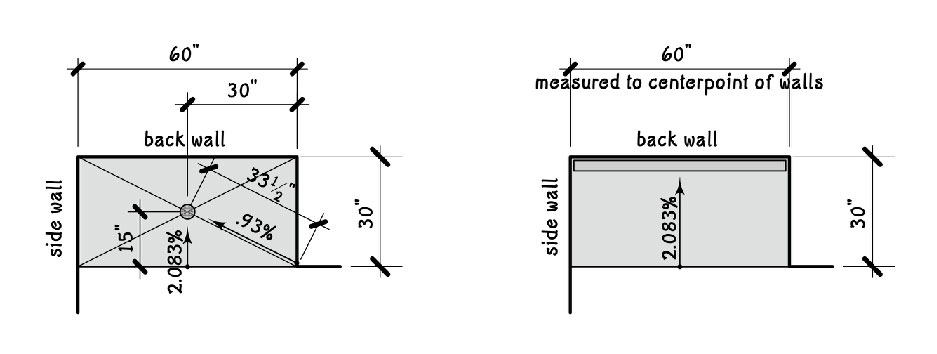Blog
Return to Blog »
Janis Kent, Architect, FAIA, CASp © May, 2024 Shower floors in roll-in showers can be a challenge meeting both the needs for Access and for drainage. And the issue is, that generally center drains are less costly than a linear drain. If the floor is not sloped enough, then it takes longer to dry and many times there is ponding of water with mildew build up. The ADA Standards do not state anything on slopes for drainage but rather leave that to plumbing codes. Nor does it state anything specifically about shower floor slopes for Access, although it might be reasonable to infer that the controls would need a clear floor space in front which would then trigger a 2.083% maximum slope. California, on the other hand, specifically states, 2.083% maximum. The issue with this is if you take a center drain in a 30″ x 60″ roll-in shower, with 2.083% maximum slope, the slope from the corners (which is the longer distance and thereby the shallower slope), to the center drain would be .93%. This would not be enough slope to sufficiently drain the shower floor. The California Plumbing Code states the shower compartment slope is 1.04% minimum in areas other than public showers. The shortest distance, and hence the steepest slope, which would be 2.083%, is from the center back and center front to the drain – basically 15″ from front edge to center and 15″ from back wall to center. So the only way to meet both the 2.083% maximum slope and the 1.04% minimum slope is to have a linear drain along one of the long edges. This takes a bit of remembering from geometry and trigonometry classes, but the math is shown in the diagram. If one provides a single slope from front to back with a linear drain, the height differential is ⅝” for a 30″ deep shower with a 2.083% slope. Now for privately owned multi-family dwelling units, in California, one is allowed a 4.16% maximum slope. This would allow a center drain for adaptable units. So if you are working on multi-family projects, be aware that in California, all mobility dwelling units with roll-in showers will need a linear drain. This is also true of other showers in public spaces, whether a health spa, or mobility guest room roll-in shower, etc. It is these small things that can trip us up. So be aware of your standard details. Be aware that your local City or County may have additional requirements that are more restrictive than the State or Federal requirements. Also, this article is an interpretation and opinion of the writer. It is meant as a summary – current original regulations should always be reviewed when making any decisions. © Janis Kent, Architect, FAIA, CASp May, 2024Bathing Showers and Sloped Floors

